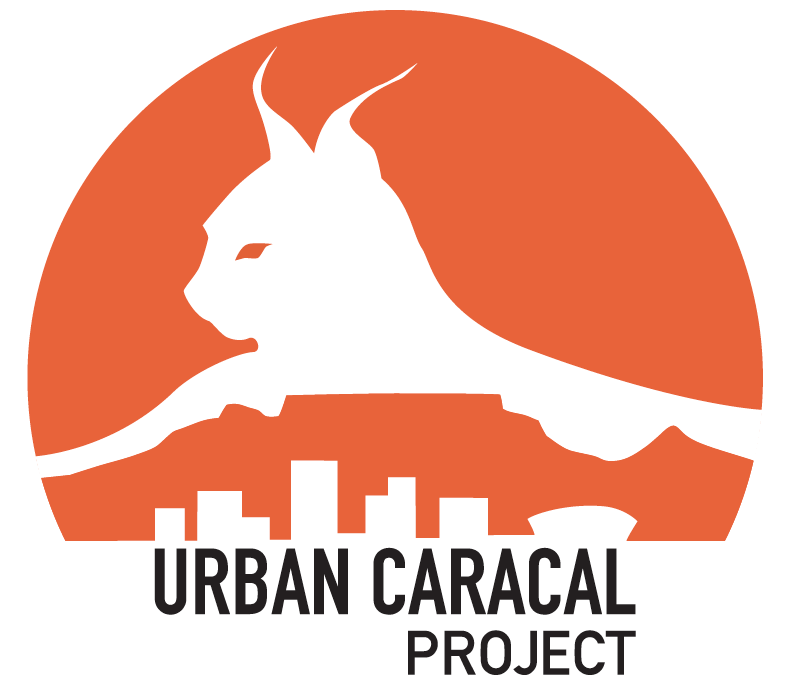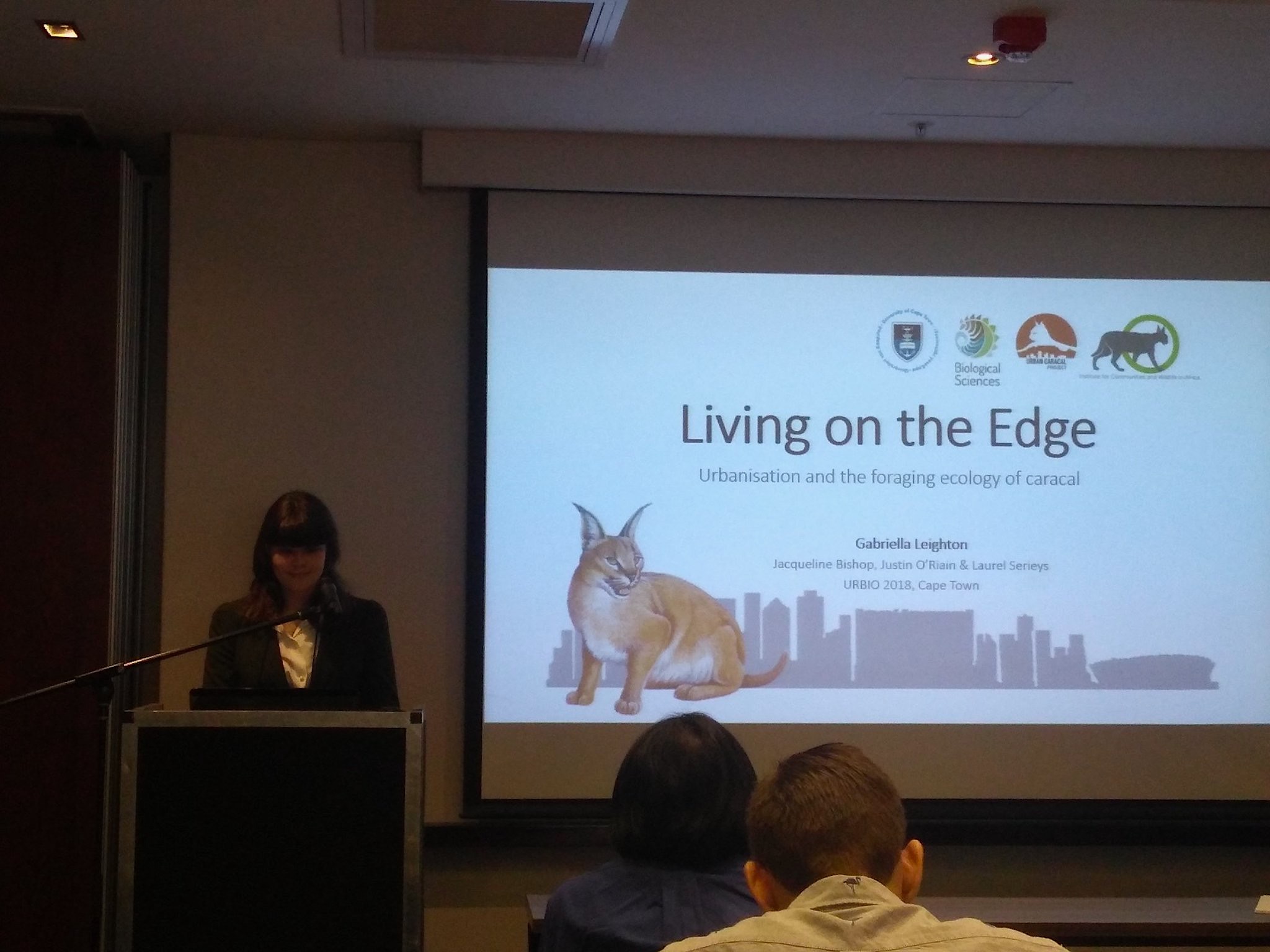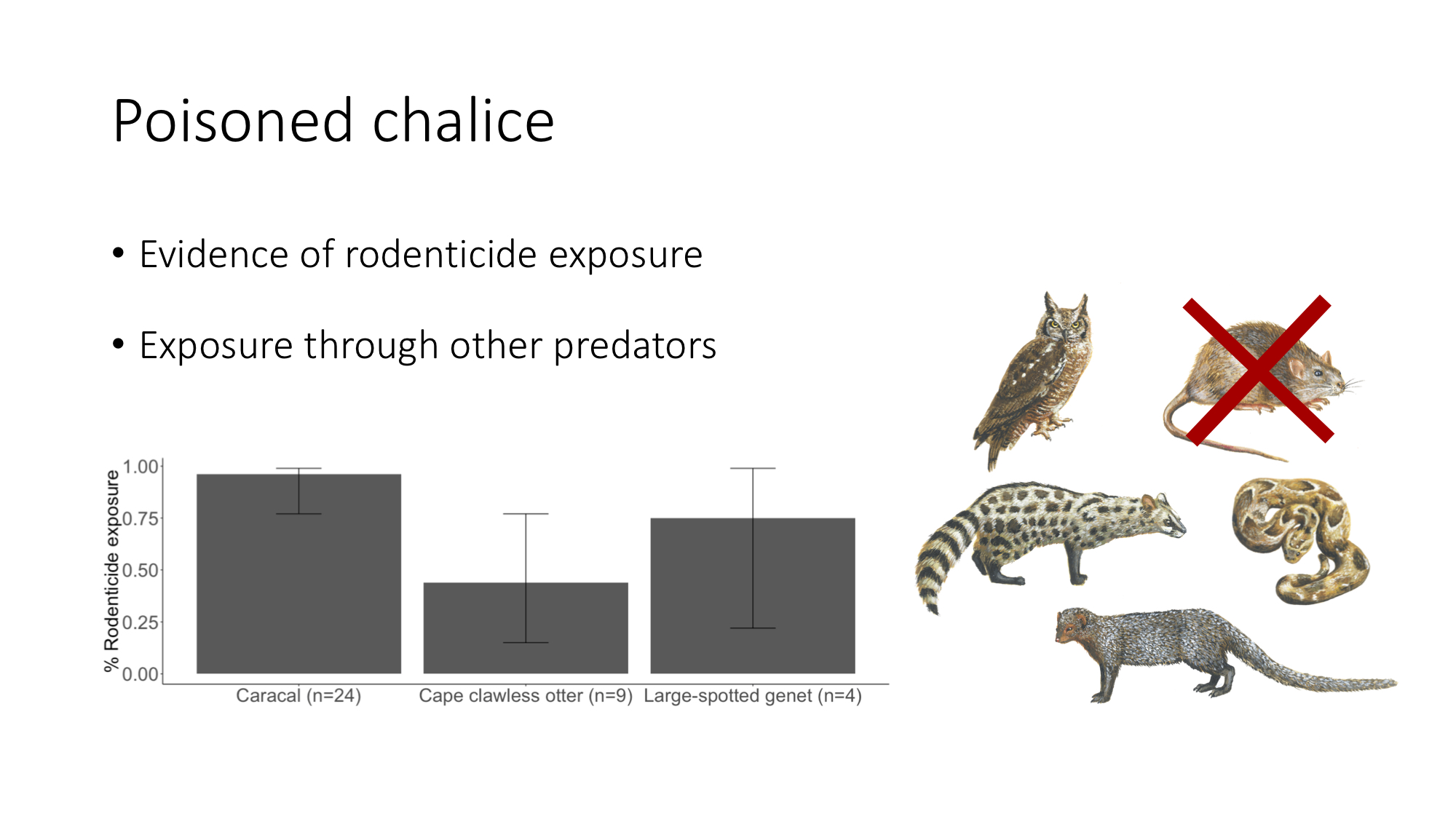URBIO Conference 2018
Last week I attended the 10th International URBIO conference that was conveniently held in Woodstock, Cape Town. My supervisors Laurel Serieys and Justin O’Riain were also in attendance, and it was great to have such a strong iCWild contingent there. URBIO (International Network for Urban Biodiversity and Design) describe themselves as “an open worldwide network of educators, scientists, government officials, and practitioners that promote the design and management of sustainable cities.” The theme this year was Urban Biodiversity and Food Security, and this meant talks and posters relating to urban sustainability, design and management, urban ecology, policy, food security and urban agriculture, and human dimensions and conservation.
While there were a fair few “pure” ecology talks, I doubt they imagined a talk on caracalfood security when they dreamt up the theme! Nevertheless, my abstract was accepted and I presented in the afternoon on Wednesday the 12th September. I spoke about our ideas around the Cape Peninsula potentially representing an “ecological trap”, with attractive abundant prey drawing caracals into greater risk of mortality through obvious causes, like car collisions, but also through cryptic causes, like exposure to environmental toxicants (we are particularly interested in anticoagulant rodenticides, DDT and PCBs). We have already tested three species of predators on the Cape Peninsula for rodenticides (caracal, Cape clawless otter and large-spotted genet), and all three show exposure to a range of different compounds. I know from the diet results that this exposure isn’t from introduced rodents (e.g. Rattus norvegicus), but is more likely from consuming predators that do consume those rodents. We’ve found caracals feeding on large-spotted genet, Cape grey mongoose, raptors and snakes – all possible secondary or tertiary sources of toxicants.
Next steps are to look into the patterns in DDT and PCB exposure. We hope to send our samples to a Spanish lab (at UCLM) in the near future. Then I can look at patterns of toxicant exposure and the diet data (e.g. proportion predators consumed), home range characteristics (e.g. proportion urban area) and health measures from blood-work.
On the Friday 14th September Laurel presented her results on caracal persistence in a dynamic landscape. The preliminary habitat selection models are showing that as a highly mobile species moving in a closed system on the isolated Cape Peninsula caracals persist through very broad selectivity. They seem to be able to adapt to most landscapes and rapid changes they face.
I was very impressed with the international crowd. There were Swiss, American, Japanese, Icelandic, Australian, Indian, Ugandan, Malawian, Kenyan, Columbian and Israeli delegates… to name a few I remember. It was valuable to get such diverse perspectives on urban topics – from academics, but also urban planners, landscape designers, NGOs and conservation managers.
Along with stimulating talks on everything from invasive plants to urban pollinators to urban planning and the biotic homogenisation debate, there was absolutely delicious food (all vegetarian!) in a Green Star rated location at the Double Tree Hotel. The keynote talks were varied. I really enjoyed the one by Lief Peterson on the “hidden economy” of traditional healing and wild-harvested medicine around Cape Town, as well as Timon McPhearson’s talk on urban nature-based solutions for resilience in the Anthropocene, where he focused on the issue of urban heat.
URBIO 2018 was definitely a worthwhile experience for me. I met some really interesting people from all over the world, had some engaging conversations and now have a lot to think about, and certainly a lot of papers to hunt down and read!




